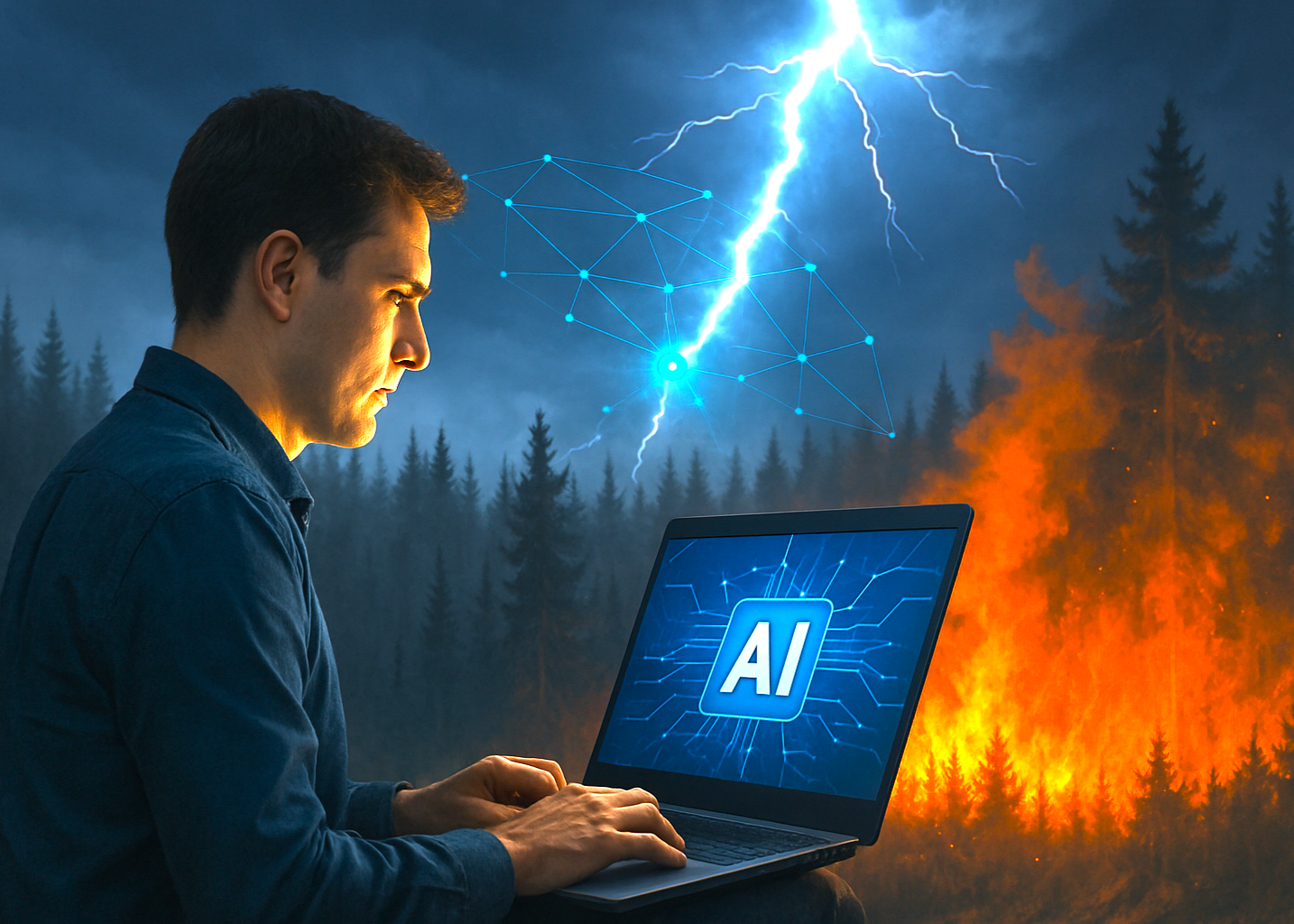Artificial Intelligence
AI predicts lightning-induced wildfires
Bar-Ilan University researchers have created technology capable of predicting lightning-sparked wildfires with more than 90% accuracy.
Share
- Click to share on X (Opens in new window) X
- Click to share on Facebook (Opens in new window) Facebook
- Click to share on LinkedIn (Opens in new window) LinkedIn
- Click to email a link to a friend (Opens in new window) Email
- Click to share on Reddit (Opens in new window) Reddit
- Click to share on WhatsApp (Opens in new window) WhatsApp
- Click to share on Pinterest (Opens in new window) Pinterest
A new AI model can predict where and when lightning strikes are likely to trigger wildfires, achieving over 90% accuracy – a first in wildfire forecasting. The tool addresses the growing threat of wildfires, which are on the rise due to climate change.
The model was developed by Dr Oren Glickman and Dr Assaf Shmuel of the Department of Computer Science at Bar-Ilan University, in collaboration with experts from Ariel and Tel Aviv Universities.
Their research paper on the model, titled Global lightning-ignited wildfires prediction and climate change projections based on explainable machine learning models, was published in Scientific Reports.
The team used seven years of high-resolution global satellite data, alongside detailed environmental factors like vegetation, weather patterns, and topography, to map and predict lightning-induced wildfire risks on a global scale. It was rigorously tested using wildfire data from 2021, showing accuracies higher than traditional methods.
The AI model outperforms other fire danger indices by taking a global, data-driven approach. It integrates data from satellites, weather systems, and environmental factors to assess the likelihood of lightning-induced fires, overcoming the limitations of regional and data-restricted models.
As climate change increases, extreme weather conditions – including increased lightning activity, prolonged heat, and dry environments – are contributing to more frequent and severe wildfires. Although many fires are caused by human activity, lightning remains one of the most unpredictable and dangerous natural ignition sources, especially in remote areas.
These fires can smoulder unnoticed for days before escalating into large-scale blazes. In August 2020, lightning strikes ignited wildfires across Northern California, burning over 1.5-million acres and resulting in dozens of fatalities.
Improved prediction of lightning-induced wildfires could enable meteorological services, fire departments, and emergency planners to respond earlier and more effectively, helping to reduce harm to people and ecosystems. The new model fills a critical gap in current wildfire forecasting systems, which are generally better suited to fires caused by human activity.
Lightning-sparked fires often behave differently and tend to ignite in remote, difficult-to-access areas, making them harder to predict and manage. While the AI model is not yet integrated into real-time forecasting systems, its development marks a step forward in wildfire prediction.
“With the growing implications of climate change, new modelling tools are required to better understand and predict its impacts; machine learning holds significant potential to enhance these efforts, says Dr Shmuel.
Dr. Glickman says: “We are at a critical moment in understanding the complexities of wildfire ignitions. Machine learning offers the potential to revolutionise how we predict and respond to lightning-ignited wildfires, providing insights that could save lives and preserve ecosystems.”
* Read the research published in ‘Scientific Reports’ here.
Share
- Click to share on X (Opens in new window) X
- Click to share on Facebook (Opens in new window) Facebook
- Click to share on LinkedIn (Opens in new window) LinkedIn
- Click to email a link to a friend (Opens in new window) Email
- Click to share on Reddit (Opens in new window) Reddit
- Click to share on WhatsApp (Opens in new window) WhatsApp
- Click to share on Pinterest (Opens in new window) Pinterest
| Thank you for Signing Up |




















